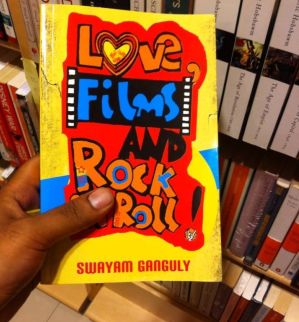Long long ago… there was a princess with ocean blue eyes, hair like spun gold, complexion like peaches and cream, and a waist that could be spanned with two hands… or that’s what I presume! Well with all these attributes how could she not be a princess?
But alas! One day, an ugly crone, with twisted back, and grey and knotted of hair came and took her away, and with all possible dark, black magic – puts her behind the windows of an ivory tower. Here, the princess did nothing to rescue herself, but she only sang her sweet laments, such that little birds cried out to her sorrow. And despite all her gloom, she still believed in one thing that Revlon claims to sell… Hope. For she thought her Prince Charming will come and rescue her… Someday!
And then one day, her Prince Charming heard her voice, and answered her every spoken and unspoken prayer, glanced upon her countenance and fell “deeply in love” (That’s all she was waiting for after all!).
He not only killed the crone chivalrously, but rescued and married the obviously thin and fair skinned princess and apparently lived happily ever after with her.
That’s how a typical fairytale goes, does it not? There are too many perfectly beautiful damsels in distress, awaiting their chivalrous knights to come rescue them. From Rapunzel to Ariel, from Cinderella to Sleeping Beauty, these characters have appeared on movie screens and TV sets. This is not only a Construction of Reality by the Western world. Our own home made Amar Chitra Katha too follows the same stereotype. The Good man is white skinned, with perfect dentures, tight abs, and a flexible back always ready to rescue the ‘damsel in distress.’ Bad man of course is brown or black skinned, deformed, pot-bellied and everything that’s not so good. And not to mention he also consumes flesh and alcohol, while the virtuous ones eat more fruits and vegetables than prescribed in any slimming diet!
These are stories we’ve all loved as children, and still turn to time and again as adults. However, I can’t help but wonder… how much do we carry these childhood fantasies into our adulthood, subconsciously or otherwise? Do they contribute to a culture that has led to the creation of the largest fairness cream market in the world? I often thought when do we get to see real heroines, with good messages, and more brains than beauty.
Amidst all these thoughts, when I watched a few episodes of Shrek recently, I realized why I started growing quite fond of this animated series … which is much more than funny characters and laugh-out-loud lines! In fact, at last the movie industry has answered some of my questions and those of the like-minded people I occasionally come across!
Unlike the anti-feminist, racist, body dystopia-promoting stories, this one turned out to be liberal and refreshing. The story revolves around Shrek, a plump, green ogre, who actually turns out to be the hero of the piece. Princess Fiona who chooses to abandon her looks to truly be herself, and be with the man she loves. And who also occasionally rescues him from the evil Prince Charming, who has hair like gold but a heart of coal. And there’s an inter-racial marriage too, in the form of Donkey and Dragon.
Shrek is a refreshing change to the familiar fairy tale movies. It will restore your faith in the children’s movie industry, and allow you to feel confident that you can reinforce feminist values while taking your children – or just yourself – to see it. I would like to see more of such creations in the world of animation with optimistic messages, packed into a wallop of an entertaining film.



